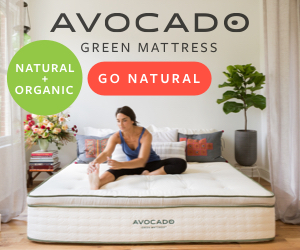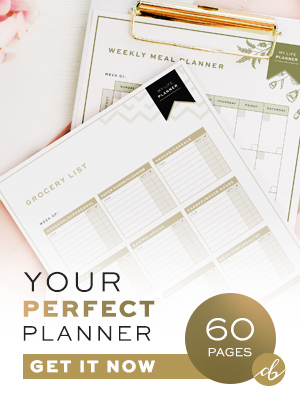Time for end of spring cleaning, am I right? This past year has been intense and I'm starting to be a bit more selfish with my time and energy. I have some repairing and damage to fix to myself, as well and this spring to summer transition I am spending more time doing more selfcare and focusing on positive changes. I've been doing that for a few months now, but spring is really the time to do some cleaning and clearing. I've decided to spend this time ridding the house of germs, cleaning up our "make-shift" pantry, and boosting our immune systems and self worth. I decided now is the time to go through and get rid of many things in our possession that we are only keeping out of not hurting other's feelings. Emotional attachment is the worst kind of attachment to break, but now is the time. That means, cleaning a lot of areas that seem to get neglected in our day to day activities, donating gifts that we don't even like, and getting rid of clothing that no longer fits. Spring is the perfect time to do some spring cleaning, in more ways than one. Here's a list of things I am tackling this spring to get them cleaned and back to looking and feeling fresh.
*Window Cleaning: There's 12 windows, total in this rental house. Each one of them will be getting a through and well-deserved cleaning inside and a through washing outside, too. Plus, all of the curtains will be getting a good washing, as well as the curtain rods removed and cleaned.
*Microwave and Oven: A few drops of lemon juice and lemon essential oil in a glass bowl of water and placed inside the microwave for 20 seconds before wiping it out, helps with the smell and to help remove any stuck on food particles along the sides and on the top. For the oven, I use a squirt bottle with warm water and lemon essential oil, spray around the oven and hit the self cleaning cycle.
*Walls: Go old vinegar and hot water works the best. We don't have small children in this house, so it's not a huge cause for elbow grease on the walls, but there are a few areas that take a bit more scrubbing; door frames, garage entrance, bathroom wall, kitchen wall, etc. For those, straight vinegar and a bit of baking soda gets it right off. I am planning on repainting a few areas that seem to have heavier traffic throughout the year, too.
*Furniture: I vacuum and scrub with water/vinegar mix for stains. We don't have a lot of furniture that has cloth on it, so that part is pretty simple. We do have a lot of wood furniture and a simple mixture of vinegar and water gets those looking like new.
*Refrigerator/Washer/Dryer/Oven: I like to pull these out once a spring and clean well under, behind, and even inside of them. I pull everything out of the refrigerator, wash the shelves, sides, and top, as well as the freezer, with a water/vinegar mix. Throw away old, or expired foods and reorganize to suit our needs. When I pull the refrigerator out, I clean the drip pan, and vacuum the coils and underneath. I hand wipe the underside of the refrigerator with a water/vinegar mix and wipe down any areas that seem to accumulate dust or debris. I run the washer with a hot load and vinegar and soap inside the washer. I clean the water pipes, water shut off knobs and around the sides and top of the machine. For the dryer, I do the same, clean the sides, and top and wipe the inside out with a water/vinegar mix. With the oven, I pull it out the oven completely (unplugging it) and clean the underside of the oven and wipe down the floor entirely where it sits. I like to clean the walls around all of these machines, too.
*Light Fixtures/Door Knobs/Locks/Light Switches: These should be cleaned at least once a week, if not once a month, anyway. The light fixtures and ceiling fans maybe every six months, depending on where you live and how much dust your house accumulates. This house seems to be a dust trap, as well as a place spiders like to hang out, for some reason. I've read it has a lot to do with drafts and this house is definitely drafty, even at the best of times. I like to wipe and clean everything with a vinegar/water mix and hit the dusty areas with a wet rag at least once a month, but spring is a good time to start a routine and get that dust, dead bugs, and other unwanted items that seem to find their way into and onto our fixtures.
*Seasonal Bedding: Wash it, fold it, and put it away in the closet. Since the seasons are changing there's no need to have heavy bedding on your bed. Also, washing your mattress cover during this time is a great routine to get into. I tend to wash ours once a week with the other bedding, but some people only wash their mattress cover every six months, or once a year. It's really up to your lifestyle and preference. I prefer a clean bed at least once a week. Vacuuming your mattress during this time is a great way to cut down on dust mites and allergies, too. Also, popping your pillows into the dryer on low cycle with some wool dryer balls with a few drops of your favorite essential oil, too, will help with allergies and dust mites, as well.
*Garage: I like to take everything out, sort through things one-by-one and donate things we haven't used in year. A year is enough time to determine whether you're going to use something again. With the exception of items that you don't use on a regular basis, air pump, tarps, car jack, anti-freeze, first aid kit, fire extinguisher, etc. Those items are needed, but may not be used in a year's time, so hang onto them. But, sort them and keep them in an area for extended keep. If now say, you haven't used something in three years, it's probably time to let it go. Fire extinguishers and first aid items should be used, or replaced in that amount of time anyway. After everything is removed from the garage, a good spray of the floor, or a moping is needed (depending on your flooring) and cleaned of debris, car tire marks, paint spills, oils spills, etc. Once your floor is dry, start bringing items back in. Never leave items on the floor of your garage. If needed purchase shelving, or build shelving. Items on the floor tend to make the area look cluttered. Wall hooks and racks are great for items, as well, consider installing what suits your needs and keeps your garage floor tidy.
*Repainting: I like to stand outside at the front of my house with a notebook and walk through the entire house all the way to the backyard and write down anything that needs a good coat of paint. Front door entrance, vestibule, hallway, stairs, walls, kitchen, backdoor trim, garage walls, and even possibly the outside deck or porch area. Writing it down you won't forget what you saw and won't see it later and get frustrated that you forgot. All of this is a good way to start the season fresh and feel like your home is well taken care of. There are other items that get added to that list, as well. Items such as, a new piece of wood on the window where the air conditioner sits, trim replacement for a piece missing by the stairs, or even maybe a new lock on the gate. Writing them down and walking through gives you the same eye as a guest and what they could see when visiting.
I get a lot of my cleaning tips from Clean Mama. She posts some great schedules on her social media pages and I love to check in with her newest posts just to keep myself on task with everyday chores, as well as monthly, and yearly tasks. Her site also has printables and other items you can purchase to keep you accountable to your cleaning tasks. She was a huge help during our minimalism challenges on what to bring into the home and what to get rid of. It was nice to know that I wasn't alone in this desire to make my home more to our needs and wants, and keep it clean at the same time.
I follow this rough draft of chores, but with a few additional things added that fit our lifestyle. I'm a Virgo and as a Virgo, "Cleanliness is instinctual for Virgos, so they will obsess about an item out of place or a surface stain until it's been properly taken care of." Remember, we are not looking for perfection.






















































